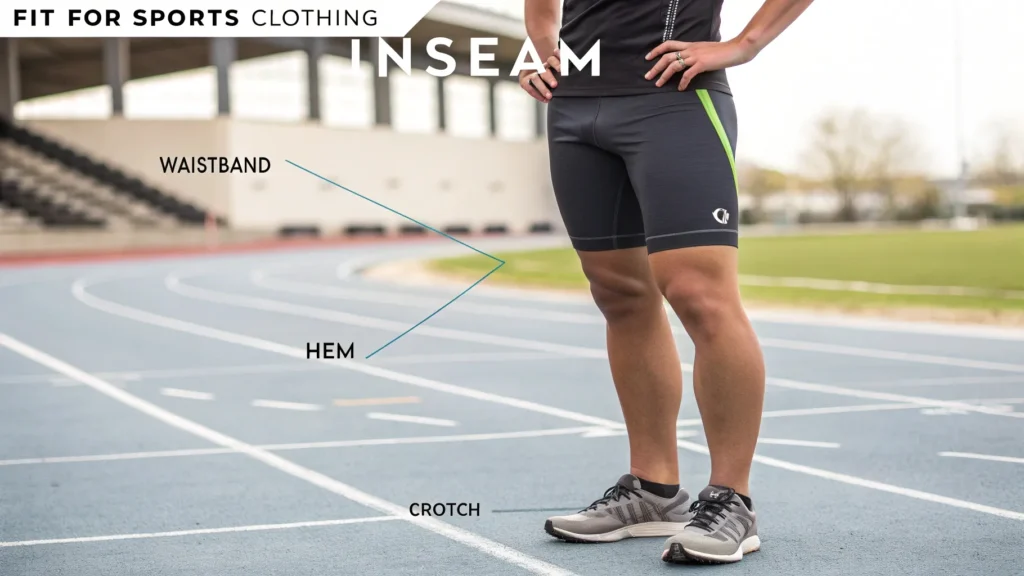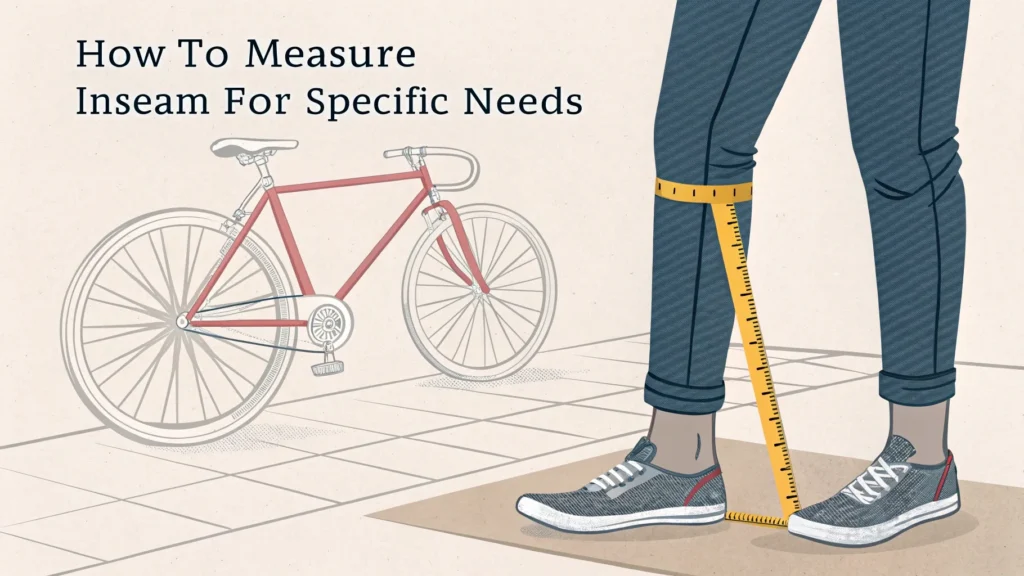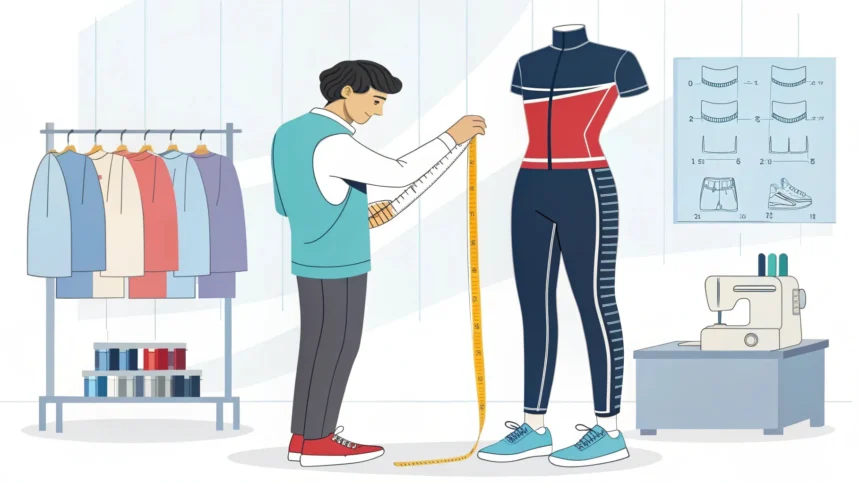Finding the perfect fit for your pants often begins with one crucial measurement: the inseam. The inseam is the measurement from the crotch seam to the hem of the pant leg, and it plays a vital role in ensuring that the pants you wear are both comfortable and flattering. This guide will walk you through the importance of measuring your inseam accurately, how to do it correctly, and provide insights into different styles of pants and adjustments, including those for cycling enthusiasts.
Why Is It Important to Measure Your Inseam?
Understanding the Role of Inseam in Fit
The inseam measurement is essential in determining how a pair of pants fits your body. It defines the length of the pant leg, which directly influences the overall silhouette and comfort of the garment. When you measure your inseam accurately, you can shop for pants that fit well, enhancing both your appearance and confidence. Whether you prefer skinny jeans or relaxed-fit trousers, the right inseam length will make a significant difference in how the pants sit on your body.

How an Accurate Inseam Measurement Affects Comfort
Comfort is paramount when it comes to choosing the right pair of pants. An accurate inseam measurement ensures that the pants you wear do not bunch up around your ankles or drag on the ground. This is particularly important for styles like ankle jeans or dress pants, where the fit can drastically change with even a slight variation in inseam length. A well-measured inseam allows you to move freely without restriction, making your day-to-day activities much more enjoyable.
Common Issues Caused by Incorrect Inseam Measurements
Many individuals underestimate the importance of measuring their inseam, which can lead to a variety of issues. Wearing pants with an incorrect inseam length can create an unflattering look, such as puddling at the ankles or a cropped appearance that does not complement your body shape. Furthermore, an improper fit can lead to discomfort, as the fabric may pull in unintended ways, especially around the crotch or thighs. By taking the time to measure your inseam correctly, you can avoid these common pitfalls and enjoy a more polished appearance.
How to Measure Your Inseam Correctly?
Tools Needed to Measure Your Inseam
To measure your inseam accurately, you will need a few simple tools. A measuring tape, often referred to as a tape measure, is essential for obtaining precise measurements. Additionally, having a pair of pants that fit you well is helpful for comparison, and a flat surface, such as a table or floor, will facilitate the measuring process. It’s also a good idea to have a pencil and paper on hand to jot down your inseam measurement for future reference.
Step-by-Step Guide to Measure Your Inseam
To measure your inseam, start by laying a pair of pants on a flat surface, ensuring that the pant legs are straight. Take your measuring tape and measure from the crotch seam down to the hem of the pant leg. Make sure to measure along the inside seam, as this will give you the most accurate inseam number. If you’re measuring yourself, stand straight with your feet about shoulder-width apart, and ask someone to help you measure, or use a pair of pants that fits well as a guide.
Tips for Getting an Accurate Inseam Measurement
Getting an accurate inseam measurement can be easy if you keep a few tips in mind. Always ensure that the pants are flat and smooth, without any wrinkles or folds. If you’re using a tape measure, hold it taut to avoid any slack in the measurement. Additionally, consider measuring while wearing the shoes you commonly wear with your pants, as this can affect the overall length you desire. Finally, double-check your measurement to ensure accuracy; it’s often helpful to measure twice to confirm your inseam length.
What Is the Perfect Inseam Length for Different Styles?
Determining the Perfect Inseam for Casual Pants
Casual pants typically require a different inseam length compared to dress pants or activewear. For casual styles, such as chinos or relaxed-fit trousers, the inseam should ideally hit just above the shoe, avoiding excessive bunching. A shorter inseam may work for cropped styles, while a longer inseam is suitable for full-length pants. It’s important to consider the type of footwear you’ll be wearing, as this can influence the perfect inseam length.
How to Measure Inseam for Dress Pants
When measuring the inseam for dress pants, precision is key. Dress pants should have a more tailored look, often requiring a slightly longer inseam to create a clean break at the ankle. To measure an inseam for dress pants, follow the same steps as outlined previously, but consider the desired fit and style of the pants you’re aiming for. A well-measured inseam will ensure that your dress pants maintain a sharp and polished appearance, whether you’re at the office or attending a formal event.
Finding the Right Inseam for Shorts and Activewear
For shorts and activewear, the inseam length can vary greatly depending on personal preference and the activity you’re engaging in. Generally, shorts have a shorter inseam, typically ranging from 5 to 10 inches. When measuring for activewear, such as jogging pants or leggings, you’ll want to consider the amount of stretch and movement required. Ensure that the inseam allows for ease of movement while maintaining a comfortable fit around the waist and hips.
How to Alter a Pair of Pants If the Inseam Is Incorrect?
Basic Alteration Techniques for Inseam Adjustment
Tools and Materials You’ll Need
- Measuring tape
- Sewing machine or needle and thread
- Seam ripper
- Straight pins or fabric clips
- Fabric chalk or a marking pen
- Iron
- Matching thread
Steps to Adjust the Inseam
1. Determine the Desired Inseam
- Measure the Current Length: Wear the pants and use a measuring tape to check the current inseam length.
- Mark the New Length: Decide the new length and mark it using fabric chalk. Make sure both legs are marked equally.

2. Prepare the Pants
- Turn Inside Out: Flip the pants inside out for easier access to the seam.
- Remove Original Stitching: Use a seam ripper to carefully remove the stitching along the inseam.
- Press the Seam: Use an iron to flatten the seam area for easier adjustments.
3. Adjust the Length
- Shortening the Inseam: Fold the fabric inward at the desired length and secure with pins or fabric clips.
- Lengthening the Inseam: If there’s extra fabric folded inside, let it out and measure to the new length. If there isn’t enough fabric, you may need to add a matching strip of material.
4. Re-Sew the Seam
- Use a Sewing Machine: Select a straight or stretch stitch, depending on the fabric type. Sew along the pinned line, removing pins as you go.
- By Hand: If sewing by hand, use a backstitch for a strong seam.
- Double Check: Before cutting excess fabric, turn the pants right side out and try them on to ensure the adjustment is accurate.
5. Finish the Edges
- Trim any excess fabric to prevent bulk.
- Use a serger or zigzag stitch to prevent fraying, especially on delicate fabrics.
- Press the seam flat with an iron for a clean finish.
Tips for a Professional Finish
- Use matching thread for a seamless look.
- Practice on scrap fabric if you’re new to sewing.
- For stretchy fabrics, use a stretch needle and thread to avoid breaking stitches.
Common Issues and Solutions
- Uneven Hemlines: Double-check measurements and markings before sewing.
- Puckered Seams: Adjust the sewing machine tension or use stabilizer for tricky fabrics.
- Fraying Fabric: Always finish raw edges to ensure durability.
Adjusting the inseam is a straightforward process that can save you time and money. With these steps, you can confidently alter your pants to fit perfectly!
When to Consult a Tailor for Inseam Alterations
While basic alterations can be performed at home, there are times when consulting a professional tailor is advisable. If the adjustments required are significant or if you’re unsure about your sewing skills, a tailor can ensure that your pants are altered correctly.
This is particularly important for high-end garments or complex styles, where precision is crucial to maintaining the overall structure and look of the pants.
Common Mistakes to Avoid When Altering Inseams
When altering inseams, there are common mistakes to avoid. One of the biggest pitfalls is not measuring accurately before making the cut; always double-check your inseam measurement to prevent cutting too much fabric.
Additionally, failing to account for the type of shoes you’ll wear can lead to an inappropriate inseam length. Lastly, be cautious not to rush the alteration process; taking your time will yield a more professional and polished result.
How to Measure an Inseam for Specific Needs, Like a Bicycle?
Understanding the Importance of Inseam for Cycling
For cycling enthusiasts, measuring the inseam accurately is crucial for selecting the right bike frame size. The inseam for a bicycle is particularly important because it affects your leg positioning and overall comfort while riding.
A proper inseam measurement can help you find a bike that allows for efficient pedaling and minimizes discomfort during long rides.

Steps to Measure Inseam for Bicycle Fit
To measure an inseam for bicycle fit, start by standing straight against a wall with your feet shoulder-width apart. Use a measuring tape to measure from the floor up to your crotch, ensuring that the tape is straight and not leaning.
This measurement will give you the inseam length needed for an appropriate bike frame size. It’s advisable to repeat this measurement a couple of times to ensure accuracy.
How Inseam Affects Bike Frame Size Selection
The inseam measurement significantly influences your bike frame size selection. A longer inseam typically correlates with a larger frame, while a shorter inseam suggests a smaller frame.
Knowing your inseam allows you to shop for bikes that will fit your body properly, ultimately enhancing your cycling experience. Selecting a bike with the correct inseam length will not only improve comfort but also efficiency, enabling you to enjoy your rides to the fullest.

